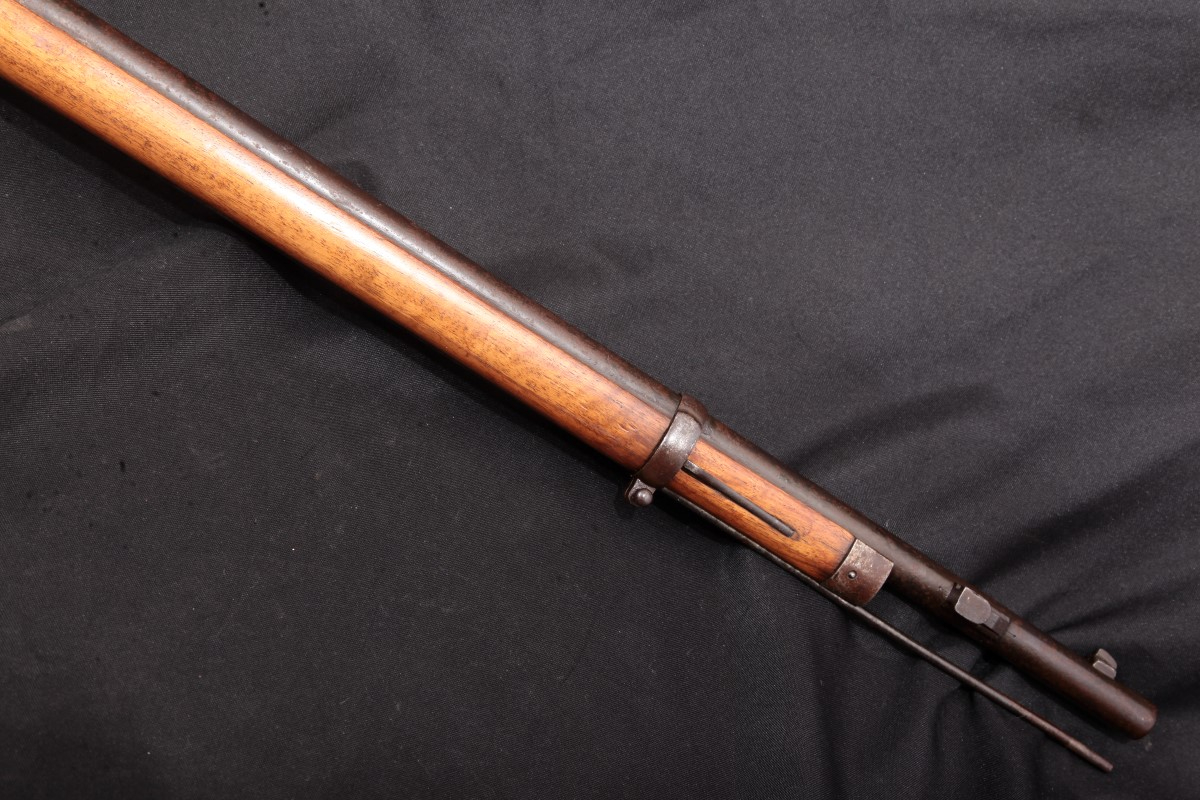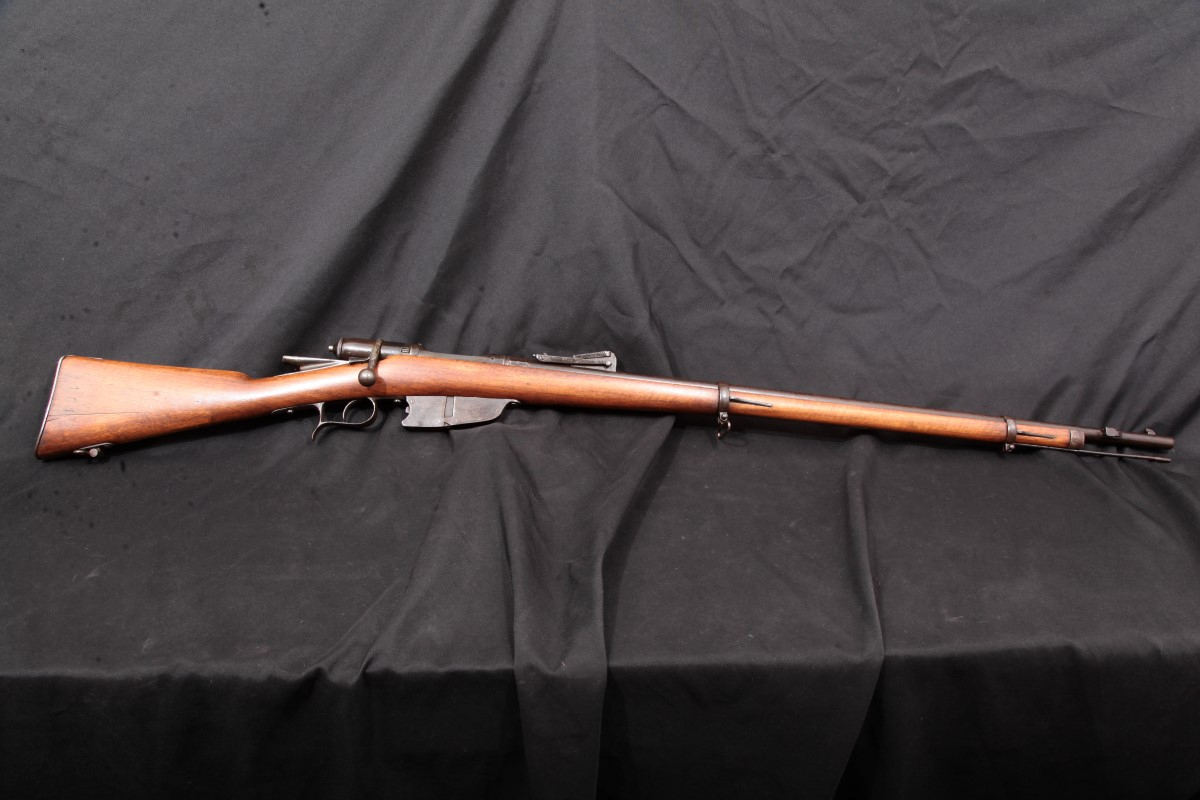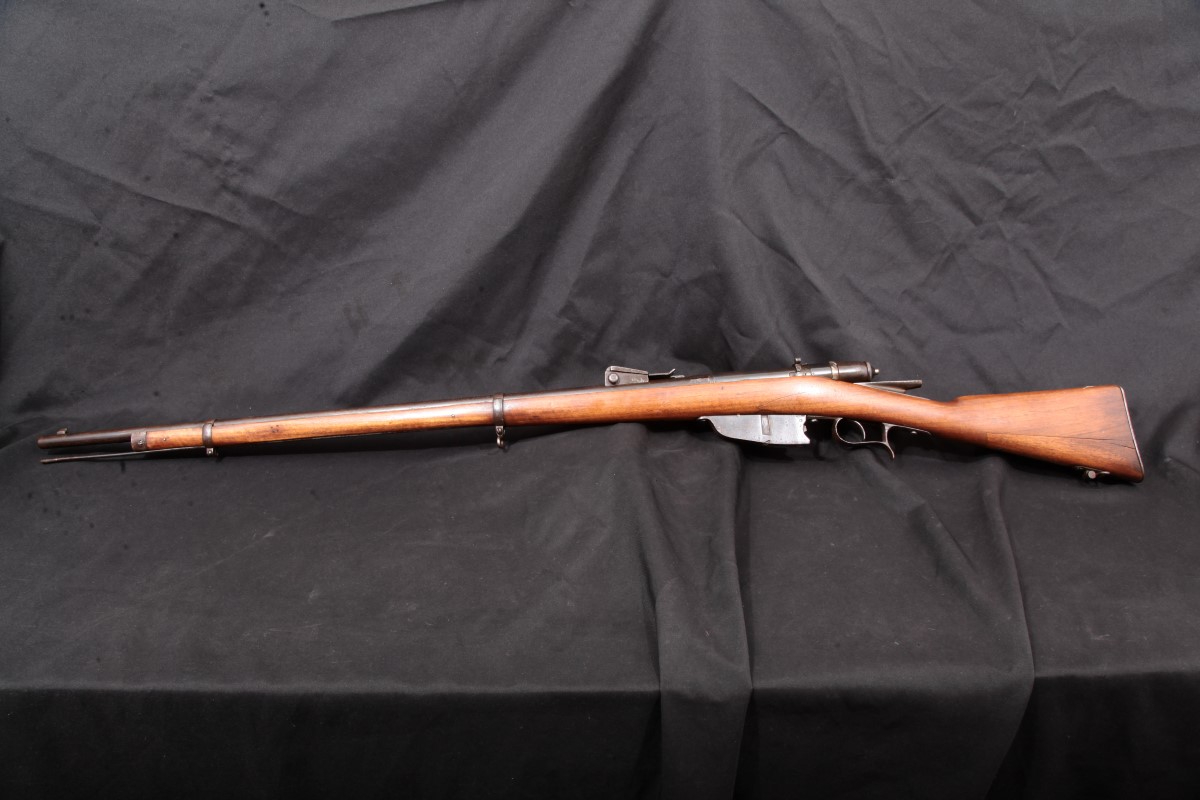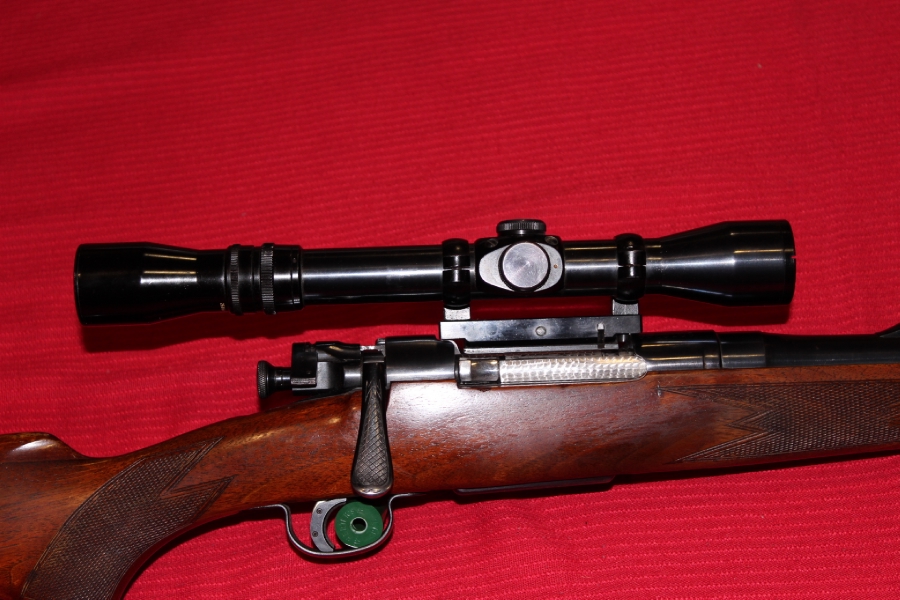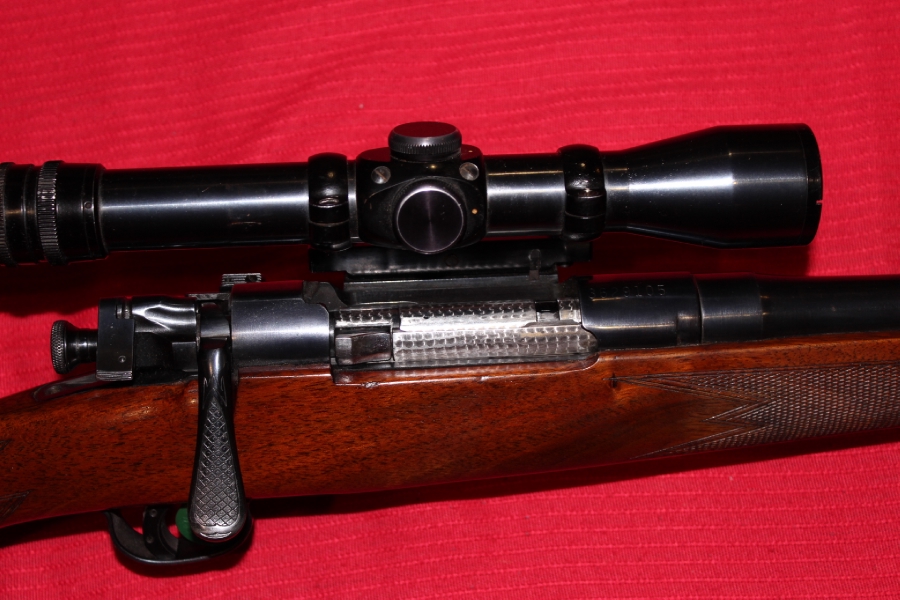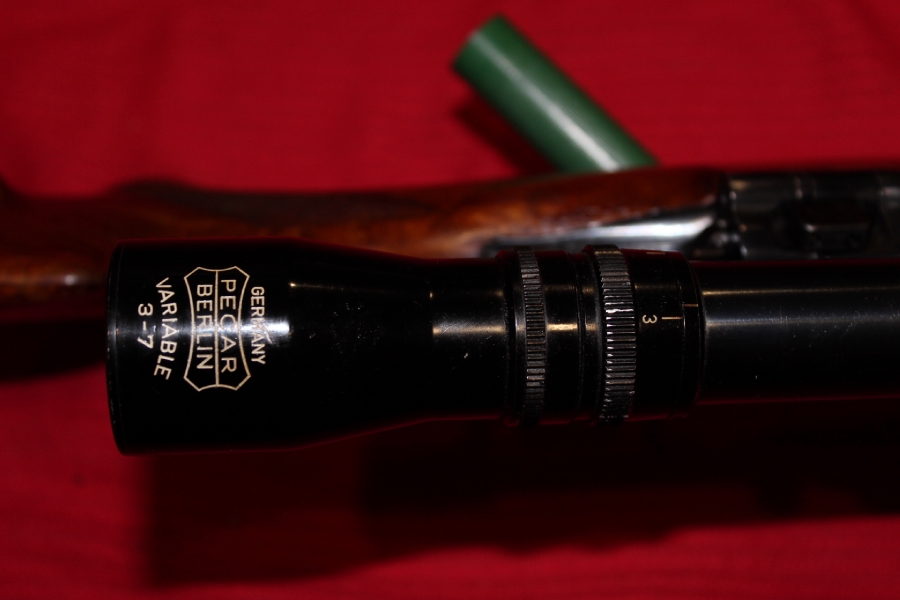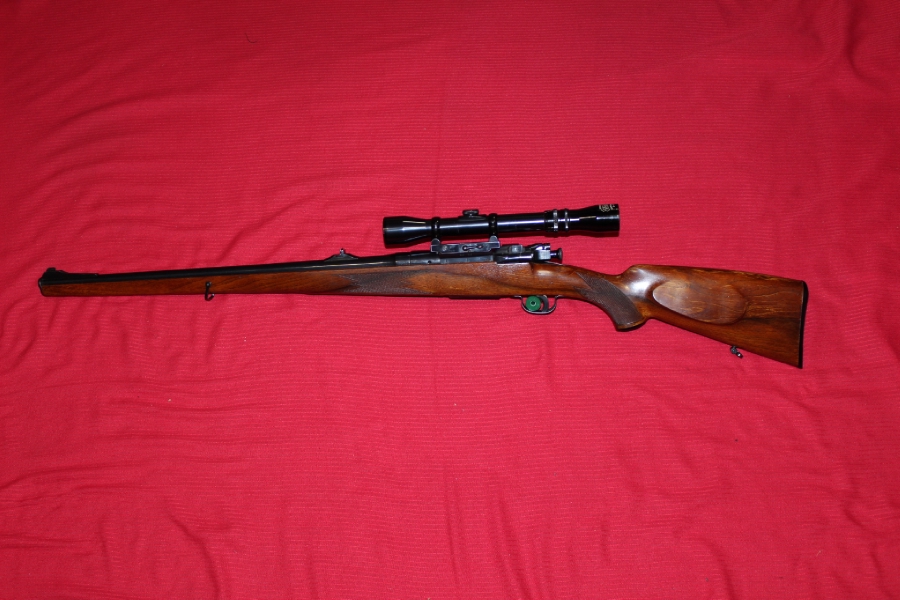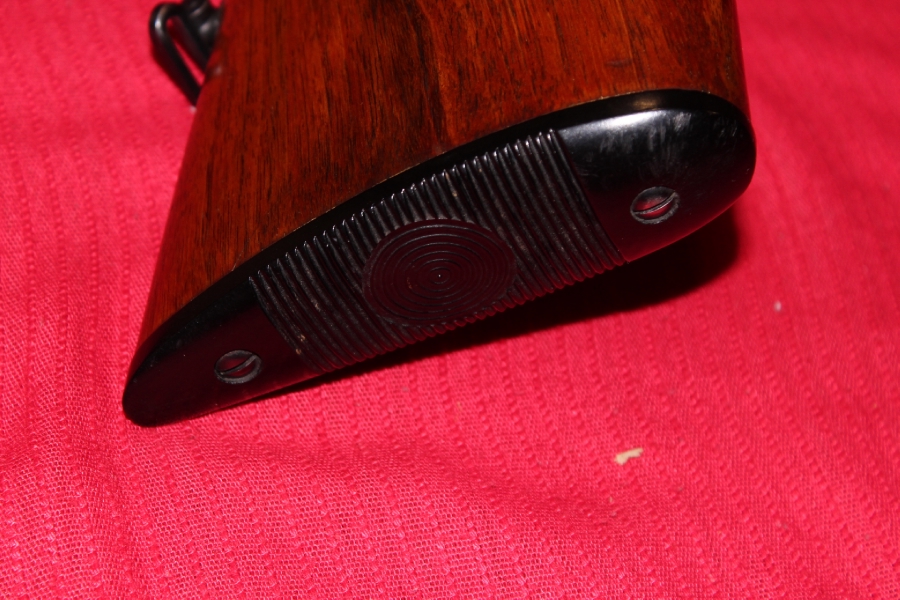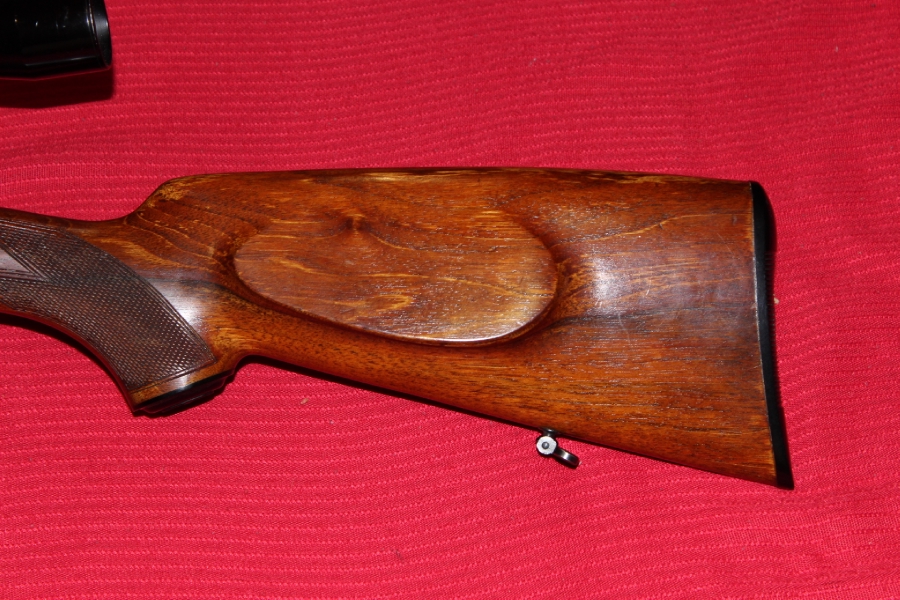Sorry Guys but this is one of the Ugliest Rifles that I have ever seen! Which is really surprising to me. As The Italians almost always led the way in Style. Go figure!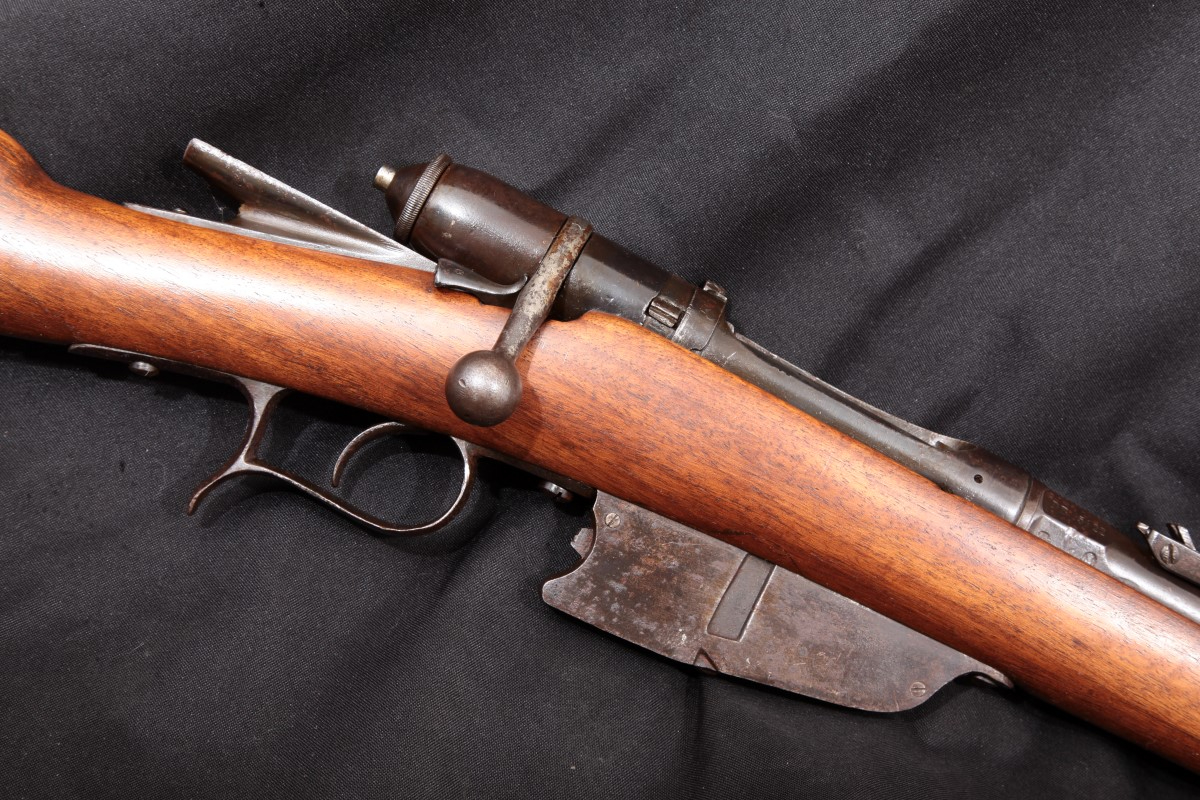
Here below is some more information about this critter!
The M1870 Vetterli was the Italian service rifle from 1870-1887, when it was gradually replaced with the M1870/87 Italian Vetterli-Vitali variant. The M1870 was a single-shot bolt action rifle chambered for the 10.4mm Vetterli centrefire cartridge, at first loaded with black powder and later with smokeless powder. The M1870 was based upon the M1869 Swiss Vetterli but simplified for economy.
M1870/87[edit]
- 10.4mm Fucile di Fanteria, Modello 1870/87 Vetterli-Vitali
In 1887 (until 1896), the Italian Army began converting the M1870 to a four-shot repeating rifle, based on the system designed by Italian artillery captain, G. Vitali. This conversion added a box magazine fed from a Swiss-style fabricated steel and wood stripper clip holding four cartridges, in the same caliber (10.4x47R mm) as before. The clip is pressed into the magazine, until the last round catches under the Cartridge retainer, and then the clip is withdrawn using the “pull string” in the top wooden frame of the clip. Clips of cartridges were supplied in a soldered sheet steel box, holding six clips.
The conversion to the Vitali magazine was done on the long rifle, the TS (special troops musketoon) and possibly some of the Carabinieri carbines; No Vitali conversions were done to the Moschetto da Cavalleria for metropolitan Italian troops. In 1888, the Fondo Coloniale (Eritrea) requested 500 Vitali-converted Vetterli cavalry carbines for the Eritrean Native Cavalry (“spahi“—Swahili for “horse-soldier”). There are currently five known examples still in existence ( one in Australia, two in the US, two in Italy). Collectors refer to it as the M1870/88 V.V.Eritrean cav carbine. The Regio Esercito (Royal Army) Cavalry units maintained the M1870 single shot Moschetto da cavalleria until replaced by the M1891 Moschetto da cavalleria, in 1893.
The conversion is indicted by a cartouche “Artig. Fab. D’armi Terni 1888” (dates vary), on the butt stock. The center of the cartouche displays a Crest of Savoy and the word, Riparazione (Italian for repair) is directly below the cartouche. Shortages of small arms appeared from the very beginning of Italy’s entrance into World War I on the side of the Allies.
As more of the population mobilized for the first total war in European history, the supply of modern small arms fell short before the end of 1915 and a large number of obsolete Modello 1870/87 Vetterli-Vital were issued to newly formed regiments that were not expected to be in combat, however, troops carried these antiquated rifles into battle on several occasions.
As well, in 1916, Italy sent a large number of Vetterli-Vitali rifles to Russia; ammunition and components were contracted for by Britain to the Remington Armory. These “tsarist” rifles eventually ended up in Republican hands in the Spanish Civil War, as the Soviet Union emptied its depots of all the old black powder and early smokeless rifles it had inherited after the Bolshevik Revolution of 1917.
M1870/87/15[edit]
During World War I, many M1870/87 rifles were converted to share the same 6.5mm smokeless powder round as the primary service rifle, the Carcano, by adding a 6.5mm barrel lining and a modified M91 Carcano magazine. The barrel sleeving was called the “Salerno method”; The bolt face was also machined to accept the smaller diameter 6.5 mm cartridge head, and the firing pin shortened. These conversions were used for rear echelon troops (guards, training, etc.) and were rarely, if at all, fired with standard 6.5 mm military ball ammunition. After WWI, many of these rifles were assigned to the colonies of Tripolitania, Fezzan and Cyrenaica (Libya) and also to Eritrea and Somalia, again, as rarely-fired training rifles. These rifles were used again in the Second Italo-Ethiopian War, mostly by native African soldiers.[1]
It is considered by knowledgeable collectors[who?] that due to the rifle’s age and general condition (manufactured in 1870-1890s) and converted twice (1887-90s and again 1915-16), that the black powder technology of the Vetterli design is not suitable for repeated use (i.e. intense combat use) with normal Italian ball ammunition of 6.5 mm, or its present-day commercial equivalent. Even back in the 1920s, anecdotal accounts of Salerno sleeves loosening under “hot” fire (they were soft-soldered in place) and subsequent “blow-by” experience since the 1950s appearance of these rifles as surplus has led to safety concerns.[2]
Comparison with contemporary rifles[edit]
Comparison of 1880s rifles[3]
| Velocity |
Height of trajectory |
Ammunition |
| .433 in (11.0 mm) |
Werndl–Holub rifle |
Austria-Hungary |
1,439 ft/s (439 m/s) |
854 ft/s (260 m/s) |
620 ft/s (190 m/s) |
449 ft/s (137 m/s) |
328 ft/s (100 m/s) |
8.252 ft (2.515 m) |
49.41 ft (15.06 m) |
162.6 ft (49.6 m) |
426.0 ft (129.8 m) |
77 gr (5.0 g) |
370 gr (24 g) |
| .45 in (11.43 mm) |
Martini–Henry |
United Kingdom |
1,315 ft/s (401 m/s) |
869 ft/s (265 m/s) |
664 ft/s (202 m/s) |
508 ft/s (155 m/s) |
389 ft/s (119 m/s) |
9.594 ft (2.924 m) |
47.90 ft (14.60 m) |
147.1 ft (44.8 m) |
357.85 ft (109.07 m) |
85 gr (5.5 g) |
480 gr (31 g) |
| .433 in (11.0 mm) |
Fusil Gras mle 1874 |
France |
1,489 ft/s (454 m/s) |
878 ft/s (268 m/s) |
643 ft/s (196 m/s) |
471 ft/s (144 m/s) |
348 ft/s (106 m/s) |
7.769 ft (2.368 m) |
46.6 ft (14.2 m) |
151.8 ft (46.3 m) |
389.9 ft (118.8 m) |
80 gr (5.2 g) |
386 gr (25.0 g) |
| .433 in (11.0 mm) |
Mauser Model 1871 |
Germany |
1,430 ft/s (440 m/s) |
859 ft/s (262 m/s) |
629 ft/s (192 m/s) |
459 ft/s (140 m/s) |
388 ft/s (118 m/s) |
8.249 ft (2.514 m) |
48.68 ft (14.84 m) |
159.2 ft (48.5 m) |
411.1 ft (125.3 m) |
75 gr (4.9 g) |
380 gr (25 g) |
| .408 in (10.4 mm) |
M1870 Italian Vetterli |
Italy |
1,430 ft/s (440 m/s) |
835 ft/s (255 m/s) |
595 ft/s (181 m/s) |
422 ft/s (129 m/s) |
304 ft/s (93 m/s) |
8.527 ft (2.599 m) |
52.17 ft (15.90 m) |
176.3 ft (53.7 m) |
469.9 ft (143.2 m) |
62 gr (4.0 g) |
310 gr (20 g) |
| .397 in (10.08 mm) |
Jarmann M1884 |
Norway and Sweden |
1,536 ft/s (468 m/s) |
908 ft/s (277 m/s) |
675 ft/s (206 m/s) |
504 ft/s (154 m/s) |
377 ft/s (115 m/s) |
7.235 ft (2.205 m) |
42.97 ft (13.10 m) |
137.6 ft (41.9 m) |
348.5 ft (106.2 m) |
77 gr (5.0 g) |
337 gr (21.8 g) |
| .42 in (10.67 mm) |
Berdan rifle |
Russia |
1,444 ft/s (440 m/s) |
873 ft/s (266 m/s) |
645 ft/s (197 m/s) |
476 ft/s (145 m/s) |
353 ft/s (108 m/s) |
7.995 ft (2.437 m) |
47.01 ft (14.33 m) |
151.7 ft (46.2 m) |
388.7 ft (118.5 m) |
77 gr (5.0 g) |
370 gr (24 g) |
| .45 in (11.43 mm) |
Springfield model 1884 |
United States |
1,301 ft/s (397 m/s) |
875 ft/s (267 m/s) |
676 ft/s (206 m/s) |
523 ft/s (159 m/s) |
404 ft/s (123 m/s) |
8.574 ft (2.613 m) |
46.88 ft (14.29 m) |
142.3 ft (43.4 m) |
343.0 ft (104.5 m) |
70 gr (4.5 g) |
500 gr (32 g) |
| .40 in (10.16 mm) |
Enfield-Martini |
United Kingdom |
1,570 ft/s (480 m/s) |
947 ft/s (289 m/s) |
719 ft/s (219 m/s) |
553 ft/s (169 m/s) |
424 ft/s (129 m/s) |
6.704 ft (2.043 m) |
39.00 ft (11.89 m) |
122.0 ft (37.2 m) |
298.47 ft (90.97 m) |
85 gr (5.5 g) |
384 gr (24.9 g) |
Gallery[edit]
Sources[edit]
For the specifications and the service history of the Italian Vetterli-Vitali rifles. M1870/87 and the M1870/87/15: http://milpas.cc/rifles/ZFiles/Italian%20Rifles/The%20ITALIAN%20VETTERLI-VITALI%20RIFLES/VETTERLI-VITALI%20M1870%20MOSCHETTO%20CAVALRY%20CARBINE.wps.htm#MODEL_18708715_RIFLE, en:First Italo-Ethiopian War, Battaglia_dell’Amba_Alagi (it), Battaglia_di_Adua (it), Vetterli-Vitali_Mod._1870/87 (it), Vetterli-Vitali_Mod._1870/87/15 (it), http://forum.axishistory.com/viewtopic.php?t=156589 Italian forces in the Boxer Rebellion.
For amendments and additions (July 2, 2015) Typographical, Vitali clip design and function, Eritrean Cav.Carbine, Salerno method, Safety of Ball 6,5 ammunition: Personal examination and research by Dr. Astrid M.Vallati MD, JD. (DocAV) AV Ballistics Technical and Forensic Services, Brisbane, Australia. Rifles examined: M1870/87 Long Rifle, ex-Tsarist Russia, ex SCW; Moschetto TS M1870/87 AOI marked; Moschetto Cavalleria Eritrea M1870/88: Provenance Confirmed, Bringback to Australia, in 1928, by Surveyor-Gen. of Sudan; Acquired from grandson of same in 1990s, with Certificate of Sudan Service. Fucile M70/87/15 Cal. 6,5mm.
References[edit]
:quality(75)/curiosity-data.s3.amazonaws.com/images/content/landscape/standard/fe9bc0a2-460e-44b1-827f-3553798f64c5.jpg)

